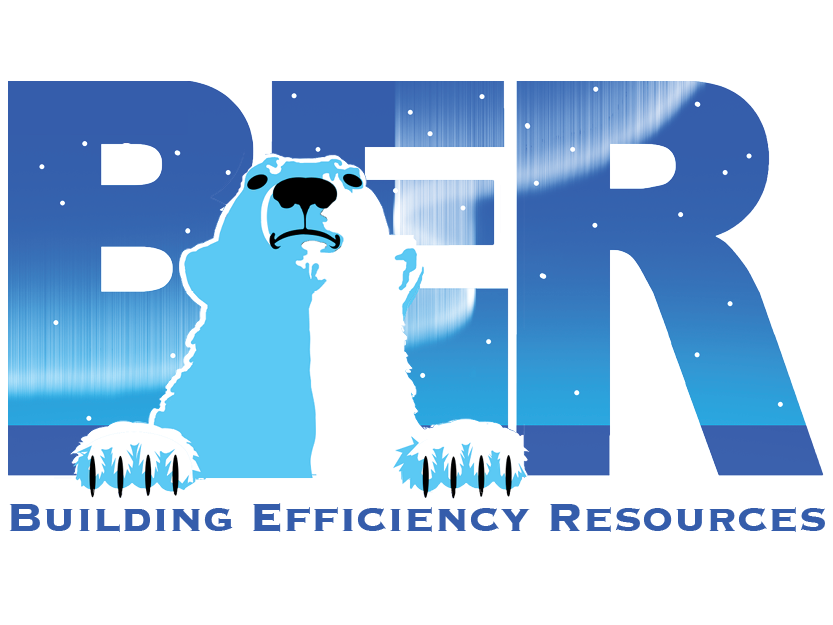FAQ
BER is a Provider organization operating in accordance with the Residential Energy Services Network (RESNET) Standards. Our clients are mainly RESNET Home Energy (HERS) Raters who join our Provider to receive training, mentorship and technical support. In addition to providing support to our Rater members, we also perform Quality Assurance on their work to ensure that they are maintaining the best practices of the energy efficiency industry and operating in accordance with the RESNET Standards.
In addition to being a RESNET Rating Provider, we are a RESNET Sampling Provider, RESNET Training Provider, Rating Provider for NYSERDA and PSEG in the State of New York, an EPA WaterSense ® New Homes Provider, EPA Indoor airPLUS ® Verification Organization and a NYSERDA Residential Green Building Program consultant.
Beyond what we do, our members’ services range from offering energy audits, HERS ratings, ENERGY STAR ® New Homes, Passive House consulting, Zero Energy Building consulting, solar and other alternative energy design and installation, energy efficient remodeling and home building, and more. Please contact us with any inquiries about these services so that we can get you in touch with our members.
It is a requirement of the RESNET Standards that all Certified HERS Raters be members of a Provider. Raters must join a Provider so that their rating work receives Quality Assurance. Additionally, by joining a Provider, Raters are able to sublicense energy modeling software, such as REM/rate, so that they may perform the computer modeling aspect of a home energy rating to determine the Home Energy Rating System (HERS) Index of the home.
Raters seeking a Provider should join BER because we offer the full package of services and support that a Rater needs to thrive within the energy efficiency industry. BER has two full-time Quality Assurance representatives that are dedicated to answering technical questions relating to REM/Rate software, building science, energy efficiency programs such as ENERGY STAR ® New Homes, and all other aspects of the energy efficient construction industry.
Furthermore, BER is a third-party Provider, meaning that we do not solicit builders or homeowners to perform rating or energy auditing work. Instead, all inquiries for these services are passed on to our network of HERS Rater clients.
Finally, BER is an innovative company. We are constantly creating rating tools, newsletter articles relating to the energy efficiency industry, and looking for new ways to help our clients succeed. To learn more about our Providership, click here.
Generally speaking, most Raters go through the following steps to become a Certified HERS Rater:
Attend a 5-8 day RESNET Rater classroom training. During the course, the rater trainee will learn about the energy efficient construction industry, building science, RESNET Standards, diagnostic testing, and computer energy modeling. Upon completion of the course, the Rater must successfully pass the RESNET National Rater Exam, as well as complete two supervised training ratings.
After successful completion of the RESNET training course, the prospective rater must join a Provider in order to be mentored through three probationary ratings. The probationary Rater shall complete these ratings under the supervision and direction of the Provider. Upon successful completion of all three probationary ratings, and any other requirements outlined by the Provider, the individual will become a Certified Rater and will be eligible to join a Provider.
After completing the probationary Rater mentorship and becoming a Certified HERS Rater, the Rater then pays their annual dues to their Provider so that they may begin submitting Confirmed HERS ratings to the Provider for QA and so that they may produce reports for their builder or homeowner clients.
Although most rater candidates will follow the above process to becoming Certified, BER offers qualified individuals with a proven background in the construction, energy efficiency, engineering/architecture industry, etc an alternative approach to becoming Certified. To learn more about our Alternative Rater Certification Package, click here.
No… the process of becoming a Certified Rater goes beyond the typical classroom training. First of all, you must have passed both training ratings and the RESNET National Rater exam and have a Certificate of Completion from your Training Provider in order to show that you have successfully fulfilled all requirements of passing the Rater exam.
Next, you must join a Provider in order to receive mentorship through three probationary Ratings. Please see our probationary Rater page to learn more about this process.
RESNET is a non-profit organization dedicated to setting standards for the residential energy efficient construction industry. The RESNET Mortgage Industry National Home Energy Rating System Standards were created by RESNET in order to ensure consistency in rating residential buildings for their energy performance and conveying this performance through a standardized system called the Home Energy Rating System (HERS) Index.
RESNET also sets the standards for certifying professionals who work within the residential energy efficiency industry. Certified HERS Raters are trained and mentored to be able to perform the inspections and energy modeling required to produce the HERS Index for a home. RESNET also has created other professional designations for individuals who primarily work on existing homes, such as Home Energy Survey Professionals and Energy Smart Contractors.
To learn more about RESNET and the standards, click here.
The HERS Index is a numeric scale meant to represent the relative energy efficiency of residential buildings. A HERS Index number of 100 is essentially equivalent to a home built to national energy code standards from 2004, as outlined by the RESNET Standards. Every point lower than 100 is equivalent to 1% of superior energy performance relative to the 2004 code, with a score of 0 representing a net-zero energy home.
Most existing homes have HERS Index numbers that are well over 100, whereas a new home today generally has a score lower than 100. A home built to current ENERGY STAR ® Qualified New Homes standards must be at least 15% better than code, and thus receive an 85 on the HERS Index. Homes built to ENERGY STAR Version 3 standards will have even better performance, as well as superior comfort, durability and indoor air quality.
If you are a builder, the value of having your home rated by a Certified Rater to obtain the HERS Index is that you may show that your new home is superior in terms of energy efficiency over most existing homes on the market today. A Certified Rater can also help to qualify your home for the ENERGY STAR New Homes program, state and utility rebate programs (where applicable) and the 2005 EPAct Builder Tax Credit.
If you are a homeowner, the value of having your home rated by a Certified Rater is to show how your home is currently performing, and how it could perform if improvements were made. Through this Improvement Analysis, the Rater will show you which improvements will save you the most money, and how fast they will pay for themselves. A Certified Rater can also help you qualify for an Energy Efficient or Energy Improvement Mortgage, which will help to qualify you for additional loan money to improve the performance of your home, which will lower the overall amount that you pay in monthly mortgage and utility bill payments.
Contact us to learn more about the HERS Index and how a Certified Rater can help you.
Most people are aware that energy efficient products such as computers and appliances are able to earn the ENERGY STAR label. Similarly, homes that are built to superior levels of energy efficiency are able to earn either ENERGY STAR Single Family New Homes (SFNH) or Multifamily New Construction (MFNC) designation.
ENERGY STAR Single Family New Homes and Multifamily New Construction are voluntary programs for builders who build their homes to beyond-code levels of energy efficiency. Builders are able to have their home earn the ENERGY STAR by working with a Certified HERS Rater, who performs inspections, diagnostic testing, and computer energy modeling to determine that the home meets all of the criteria of the ENERGY STAR program.
After the Rater performs the rating on the ENERGY STAR home, the computer energy modeling file is submitted to their Provider so that the provider may perform a Quality Assurance review of the file and supporting documentation to ensure that the home meets all the criteria for ENERGY STAR. Upon successful QA of the file, the Provider allows the Rater to print marketing materials such as the ENERGY STAR label and certificate, HERS label and certificate, and other important information about the home so that the builder may provide this information to the prospective new home buyer. To learn more about ENERGY STAR Single Family New Homes, click here. To learn more about ENERGY STAR Multifamily New Construction, click here.
In order to keep up with changes in national energy codes so that homeowners are assured that ENERGY STAR really stands for superior energy efficiency and quality, ENERGY STAR occasionally must update its standards to reflect these changes. Due to the widespread adoption of the 2009 International Energy Conservation Code (IECC), ENERGY STAR has updated its standards to the new Version 3 (v3) requirements. In 2021, ENERGY STAR delineated their standards with v3.1 specifying Single-Family New Homes and creating Multifamily New Construction v1.1.
Single-Family New Homes that meet ENERGY STAR Version 3.1 and Multifamily New Constructions that meet ENERGY STAR Version 1.1 must comply with more stringent energy efficiency requirements, and have increased measures to ensure that the homes will be comfortable, durable, and will have good indoor air quality. For more information on ENERGY STAR SFNH v3.1, click here. For more information on ENERGY STAR MFNC v1.1, click here.
Compliance with ENERGY STAR Version 3.1 homes will become fully enforced beginning in 2023. All Raters and Rating Field Inspectors who will participate in the program must complete training on the new Version 3/3.1 standard before working on a project.
BER offers ENERGY STAR Version 3 Rater Training online, so that Raters may learn about the program and become eligible to participate in Version 3 without needing to travel, find a hotel, etc. For more information on ENERGY STAR Version 3 Rater training, click here.
ENERGY STAR Version 3.2 will go into effect January 1, 2025. For more information click here.
It is best for a Rater to wait until they are Certified to begin soliciting clients. If you have not even begun the process to becoming a Certified Rater, then you may not advertise yourself as being a Rater or being able to perform ratings for a client. The steps to becoming Certified are achievable, but you cannot take them for granted. Many trainees who begin the process of becoming a Rater do not finish this process, either because they are not able to pass the RESNET National Rater exam or their training ratings, or because they decide that being a Rater is not for them.
However, once you have succeeded in passing all rater trainee requirements and are working through your probationary ratings, it is not a bad idea to use actual projects that you will be working on as your probationary rating homes. That way, when your Provider comes out to mentor you on your probationary ratings, they can advise specifically on homes that you will be working with the achieve certification.


